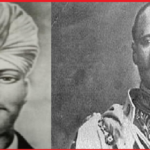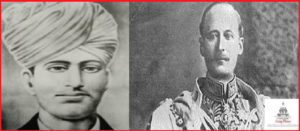Art is a valuable heritage in the culture of the people. When one speaks of an art, it usually means the visual arts- architecture, sculpture and painting.
In the past all three aspects were intertwined. Architecture included sculpture as well as painting.
Indian art, at least in the old days, scholars say was inspired by religion. However, there is nothing ascetic or self-denial about it.
Artists and craftsmen may have worked according to the instructions of the priest, but they expressed themselves as well as showed their happiness to the world as they found it.
There is indeed a holistic vision expressed through Indian art, an approach that is always aware of the divine principle behind the material world, the eternal diversity of life and nature, and above all, the human element. The history of Indian art covers almost five thousand years of continuous development.
Ancient and medieval Indian architecture cannot be separated from sculpture, which was almost an integral part of it. Perhaps only in this context is the culture of the Indus Valley an exception, as its buildings are utilitarian, without artistic flourishing. Their ornamental ornamentation may have been lost over time. However, the art of sculpture was well developed.
Sculptures and Seals of Indus Valley:
Although called the ‘Indus Valley’ or ‘Harappan’ culture, this civilization had a great spread and was apparently well advanced.
Based on archaeological evidence, the main period of this culture’s heyday—its mature or urban stage—is believed to have occurred sometime between 2100 and 1750 BC, although Indus-type artifacts date to about 4000 BC in Mesopotamia. have been found.
Judging from the scientific layout of the magnificent cities, the excellence of the materials used in the construction of houses which included baths, upper storeys and wells, citadels, assembly halls, granaries, workshops, dormitories, market-places, and almost a modern Drainage system, it was a culture of higher order. It was natural that arts and crafts should develop greatly in a society that was so advanced.
Among the surviving works of art of this civilization, the most beautiful is perhaps a bronze girl with thin, sticky limbs holding a bowl against her thigh. There are two cut outcrops from Harappa in limestone and red stone. A significant dynamic quality and plastic subtlety are expressed in these statuettes.
The best preserved of all the sculptural pieces is the head and shoulders of a man seven inches high, the face with a short beard and finely cut mustache, and the body wrapped in a shawl passing under the left shoulder and under the right arm. , suggest the image of a priest.
This statue and other statues of a bearded head found at Mohenjo-daro bear some resemblance to the statue in Sumeria, but the technical details may be superficial without any real affinity.
There are a variety of objects made in terracotta which include all kinds of small sculptures and ceramic pots of various sizes and designs. Particularly attractive are the clay animal figures that are well intended for toys, as they are large in mood and small in scale. Many jars and bowls are depicted with designs that are usually derived from nature and are associated with fertility.
Among the objects found at Indus sites are several small square celite seals with carved designs along with pictorial scripts. Seals may refer to persons who have used them to mark property and to authenticate contracts. The prism-shaped ceilings were probably records of annexes.
The depictions of seals include a large number of bulls and sometimes other animals. According to the expert opinion “animal seals are the world’s greatest example of embodying the essentiality of a given form in an artist’s artistic figure.
These are not depictions of an individual bull, but a universal representation of a species. More than 2,000 seals and seal raids with more than 400 seals have been found in the Indus Valley and there is no confirmation of this till date. Therefore our knowledge of civilization is insufficient in many respects.
The Indus Valley Civilization was basically an urban civilization. The main occupation of the people was trade and commerce. On the other hand the Vedic civilization was basically rural in character, in which agriculture was the main occupation of the people.
2. The people of the Indus Valley were icon-worshippers, while the people of the Vedic civilization were opposed to icon-worship. The common deities of the people of the Indus Valley were Mother-goddess, Shiva, trees, animals etc.
On the other hand the people of Vedic age were various worshipers of nature like Varuna, Indra, Prithvi, Surya. They even considered him as a deity. The people of Vedic age attached great importance to fire. However, this was not the case with the people of the Indus Valley Civilization.
3. The people of Indus Valley Civilization were completely unaware of the use of iron. The people of the Vedic age knew the use of various metals. They initially used gold and copper but later they also used silver, iron and bronze.
4. The Vedic people gave great importance to the cow and horse among various animals. The people of the Indus Valley did not know about the use of the horse and did not show the same to the cow or the bull.
5. The people of the Indus Valley were more advanced in the art of writing than the people of the Vedic age. Various seals discovered from the Indus Valley show that the people had an independent script of their own. Although this script has not been lost so far, it certainly suggests that they were more advanced than the Aryans.
6. The Aryans took pleasure in sports such as horse racing and chariot racing, which could be classified as outdoor games. On the other hand the people of Indus Valley loved dance and music and hence they loved door-to-door hobby.
For all these reasons, we can understand that the Vedic civilization is very ancient and the Indus civilization is the civilization that came after the Vedic civilization…
BY Rajeev Chaudhary, Author, Blogger, Youtubers








More Stories
Who is the hunter and who is the prey in the drug game of death?
Is the sun about to set on the British Raj forever?
How are people winning crores of rupees by forming a dream app team?